In my capacity as a side-hustle tour guide in and around Athens, one of the most common inquiries I hear from my prospective clients is this: ”In which part of Athens should we stay?“ With this question in mind, I compiled the following list to enumerate ten of the best neighborhoods for one to settle in during one‘s sojourn in the Greek capital city. The list doesn‘t aim to rank the neighborhoods from best to least good. Instead, it comprises diverse districts that might appeal to different tastes and needs in random order. Even if you already know where you are going to stay, the post can still prove useful as an inspiration for some parts of the city worth visiting. Each listed neighborhood is accompanied by a piece of general information about it and some recommendations for local hotels and rentals. You may also explore additional accommodation options in these areas or anywhere in Athens using the map below.
Affiliation disclosure: By purchasing goods or services via the links contained in this post, I may be earning a small commission from the seller's profit, without you being charged any extra penny. You will be thus greatly helping me to maintain and keep enriching this website. Thanks!
Stay22 is a handy tool that lets you search for and compare stays and experiences across multiple platforms on the same neat, interactive map. Hover over the listings to see the details. Click on the top-right settings icon to adjust your preferences; switch between hotels, experiences, or restaurants; and activate clever map overlays displaying information like transit lines or concentrations of sights. Click on the Show List button for the listings to appear in a list format. Booking via this map, I will be earning a small cut of the platform's profit without you being charged any extra penny. You will be thus greatly helping me to maintain and keep enriching this website. Thanks!
Plaka / Anafiotika
For the family and the couple
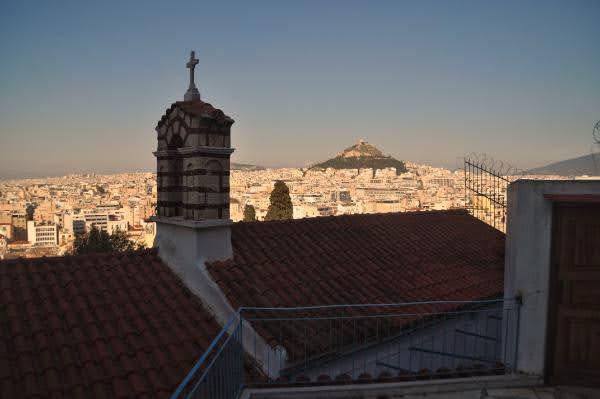
Built on the northeastern slope of the Acropolis, Plaka is by far the most picturesque and famous neighborhood of Athens. It may also be considered the oldest neighborhood of Athens, both in terms of its current houses’ age and its history of continuous habitation. Settled since the Neolithic era and once the residential center of classical Athens, it is one of the few Athenian districts that has remained uninterruptedly inhabited throughout the city’s decay in the late medieval and Ottoman periods. Owing to its historical significance, the entire neighborhood has been designated a preservable heritage site and turned into a big, open-air museum. As an example of many strict regulations that aim to maintain its aesthetic character, it is the only part of Athens where utilities infrastructure (cables, pipes…) must be kept invisible by law.
The uppermost, most picturesque part of the Plaka district is known as Anafiotika. It was initially developed in the mid-19th century by squatting construction workers from the Cycladic island of Anafi; hence its striking resemblance to a Greek island. Whereas back then it was deemed the most undesirable area of Athens (no one, besides poor squatters, would walk up a rock to go home day in and day out), now (that tourists pay dearly for a good view) it may be considered the crown jewel of Athens’ real estate.
Best described as a village within a city, Plaka consists of a maze of narrow cobbled streets and winding stairways meandering among its quaint neoclassical buildings. Strolling around, you will wonder at the neighborhood’s graceful architecture and discover ancient ruins, medieval churches, museums, little hidden gardens, artisans’ shops, traditional taverns, and panoramic viewpoints of the surrounding urban jungle. One thing you won’t see is cars. Nearly all streets are reserved for pedestrians only, making Plaka an ideal base for quiet-loving travelers who want to stay within walking distance of all the historical treasures of central Athens.
Where to stay in Plaka
Psyrri / Monastiraki
For the solo traveler and the backpacker
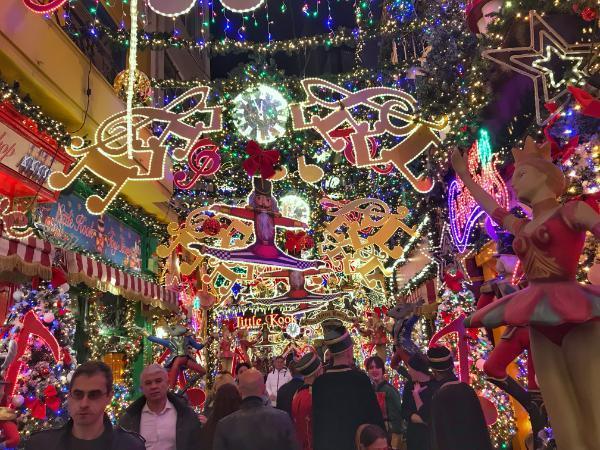
Dominated by the view of the timeless Acropolis and strategically situated amid the city’s most important sights, Monastiraki Square is the indisputable touristic heart of Athens. Across Ermou Street off the square’s north side starts the acclaimed neighborhood of Psyrri. This confined quarter of narrow, labyrinthine, mostly car-free streets has escaped its past ghetto reputation to become one of Athens’ liveliest and trendiest zones.
A beloved hangout of young locals as well, Psyrri is particularly popular among backpackers. Some of Athens’ best youth hostels are located there. Its ubiquitous cafés by day and bars by night are always abuzz with mingling people, while its fine traditional taverns offer exquisite meals in a fantastic atmosphere. Being a short walk away from Monastiraki Metro Station, Psyrri makes for an excellent base to meet other travelers and explore Athens together.
Where to stay in Psyrri
Kerameikos
For the clubber and the social butterfly
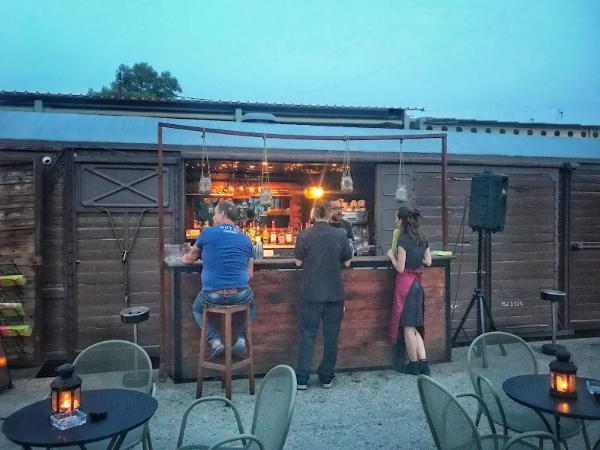
If this neighborhood sounds to you a bit like ceramic, it’s because that’s exactly what it means. Kerameikos is named after the highly esteemed community of potters that it used to house in antiquity. The homonymous archeological site located in the area contains remnants of those ancient craftsmen’s workshops, as well as the largely intact first public cemetery of Athens. Except for this outlying site, the neighborhood is a bit farther away from Athens’ main concentration of historic sites. What it’s famous for is its dense concentration of bars and nightclubs that make it the city’s principal nightlife hub.
Kerameikos spreads around its central square which hosts the homonymous metro station. The surrounding streets are every night, and particularly on the weekends, flooded with smartly dressed, intoxicated men and women looking for the best parties. Rooftop and underground dance floors alike tout their positions with beam lights or deliberately accumulated queues before their entrances, while clandestine figures distribute promotional leaflets for strip clubs. Next to the square, you also find the renowned Technopolis: a former gas factory that gives Kerameikos its alternative name of Gazi. The site today functions as a museum and one of Athens’ largest exhibition and events centers where there’ll be a good outdoor concert on most weekend nights. Kerameikos is your place if you’re a night owl.
Where to stay in Kerameikos
Exarcheia
For the young and the unconventional
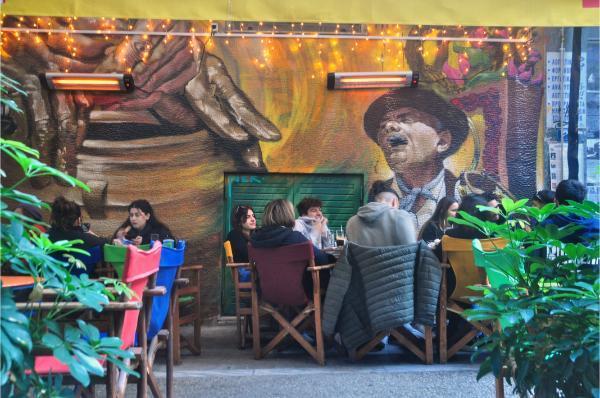
Dubbed the anarchist neighborhood of Athens, Exarcheia is the city’s leading counter-cultural hub. The area teems with squats and alternative cultural centers while its walls are laden with provoking street art and mixed posters of punk rock concerts and reactionary political organizations. Additionally, it is renowned as a literary center, being home to numerous independent bookstores and publishing houses.
Tucked between the university and the polytechnic (a focal point of the resistance against the Greek military junta from 1967 to 1974), Exarcheia unsurprisingly is a favorite hangout of students, local and foreign alike. This is the kind of place where you’ll see youthful companies, sitting in quirky outdoor cafes, smoking weed and chatting unconcernedly while catching whiffs of tear gas from some casual street fight between police and rioters two blocks away.
Despite the negative reaction of some of its elements (expect to see many aggressive, anti-gentrification messages targeting Airbnb and its customers displayed throughout the streets), Exarcheia is becoming an increasingly appealing neighborhood for tourists; particularly young independent travelers, with several youth hostels having sprouted out in recent years. It might be a good option for you, too, if you’re a young in age or spirit off-the-beaten-pather seeking to experience a different, peculiar side of Athens.
Where to stay in Exarcheia
Koukaki
For the foodie and the cultured
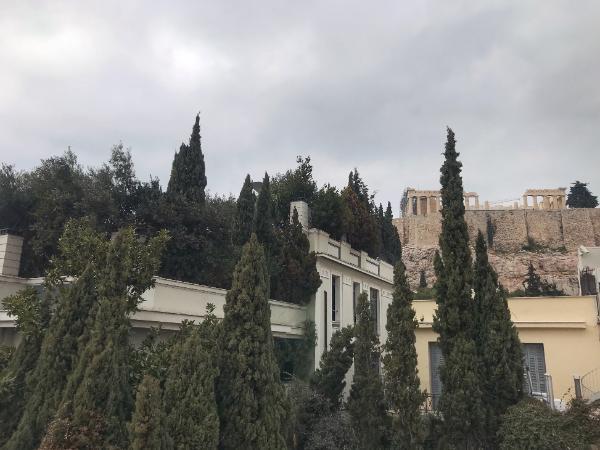
Koukaki is a small, twee neighborhood just south of the Acropolis. Based on the votes and reviews of its millions of users, Airbnb ranked it fifth in its 2015 list of the world’s coolest neighborhoods. Below its elegant neoclassical buildings, the streets teem with colorful outdoor cafés and some of the finest taverns in town, many of which fuse traditional Greek cuisine with international twists to create unique culinary experiences. Additionally, the area is home to several oasis-like community gardens, literary hangouts, and hidden art spaces and workshops.
A cherished purlieu among the Athenians’ artistic and intellectual circles, Koukaki has also become a popular base for travelers as well as expats and digital nomads. While immersing in the neighborhood’s serenity and eccentric character, you will be a short walk away from the Acropolis and other important Athenian monuments. Moreover, Koukaki lies on the foot of Philopappos Hill—the largest green space in central Athens—which lends itself to ideal brief escapades from the city’s bustle.
Where to stay in Koukaki
Kolonaki
For the wealthy and the bon vivant
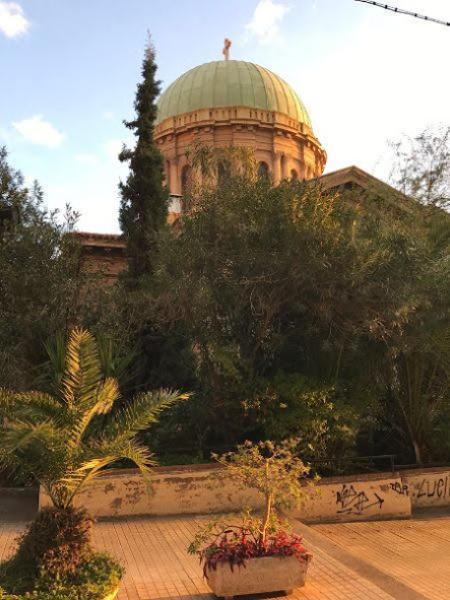
Kolonaki is an upscale neighborhood by the southern foot of Mount Lycabettus: the highest hill and most prominent viewpoint within the metropolitan area of Athens. Athens’ aristocratic sector par excellence, Kolonaki has been associated with high living for so long that its name in Greek has become synonymous with luxury. While it’s an overall quiet residential area, this is where the high-fashion designers’ boutiques and some of the city’s fanciest fine-dining restaurants are concentrated.
Kolonaki isn’t the sort of place where tourists will typically wind up. But it could be the neighborhood of your choice if you have deep pockets and fancy yourself with a cocktail in a rooftop swimming pool with a view of the Acropolis.
Where to stay in Kolonaki
Kypseli
For the authentic traveler and the local-experience seeker
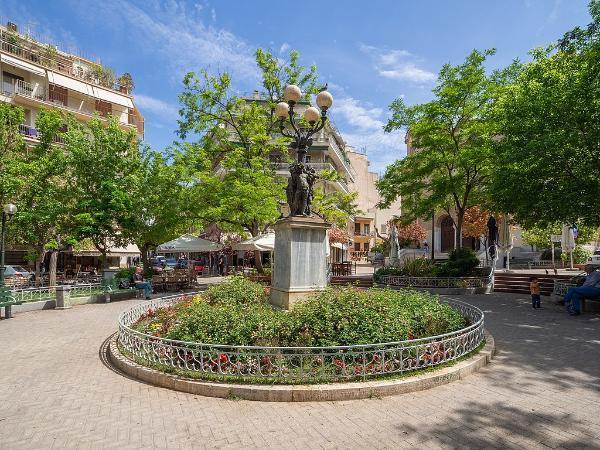
Kypseli is about as average an Athenian neighborhood as one can be. A proper concrete jungle, it is the most densely populated district in Athens and one of the most densely populated in Europe overall. Due to its lower rents, it has in recent decades attracted many immigrants who have transformed it into a multicultural hub. The neighborhood’s heart is the Kanari Square and its aorta is the Fokionos Negri Street: a broad, well-shaded pedestrian road lined up with cute cafés and Greek and international restaurants where local Greeks mingle with people from every corner of the world. While the lack of space can feel a bit asphyxiating, on the positive side, Kypseli is situated next to Pedion Areos: one of Athens’ largest parks.
With the advent of the home-sharing economy, tourists are becoming increasingly present in Kypseli, as well as other casual Athenian neighborhoods. While not exactly located within the city’s historical center, it is still conveniently placed close to it. Especially if you’re on a budget and you prefer eating good food without paying the tourist’s markup, Kypseli could make a superb base from where to discover the genuine side of Athens.
Where to stay in Kypseli
Piraeus
For the sea lover and the impending island hopper
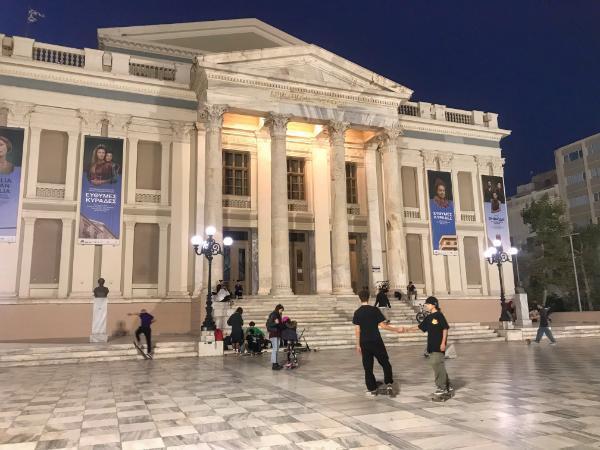
A thriving center of maritime commerce for millennia, Piraeus is Greece’s main gateway to the world and one of Europe’s busiest ports. While still a part of Athens’ immense greater metropolitan area, Pireaus City is a separate municipality with its own unique identity molded by its peculiar socioeconomic factors. Besides its bustling harbor, it encompasses two additional, scenic smaller inlets for fishing boats and private yachts—Pasalimani and Mikrolimano—around which beats the pulse of the port city’s social life. Lively cafés, bars, and some of Athens’ best seafood restaurants are to be found here, infused by a constant briny breeze.
Except for some remnants of the Themistoclean Wall and an ancient theater, Piraeus doesn’t have much to show for its glorious past compared to its mother city. Being a 20-minute train ride away from central Athens, however, it still is a legit and generally cheaper option for settling during your time in the Greek capital. It would be a particularly convenient choice if you only pass through the city briefly before ferrying it to the majestic Greek Islands.
Where to stay in Piraeus
Glyfada
For the sun chaser and the beachlifer
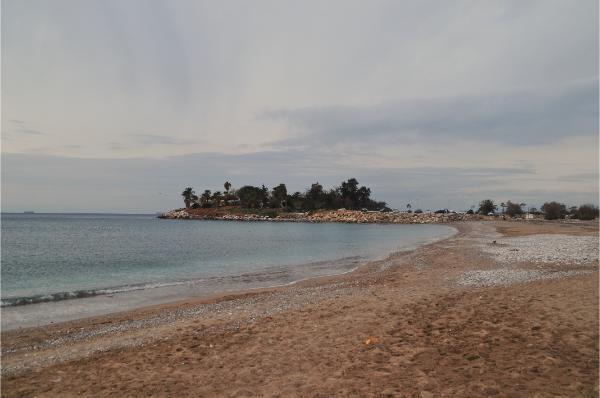
Glyfada is a large municipality in the southern suburbs of Athens, collectively called the Athenian Riviera. Squeezed between the foot of Mount Hymettus and the Saronic Gulf coast, this district is known for its costly, modern apartments, fashionable shopping and entertainment, golf course and sports facilities, and vibrant nightlife. More than anything, Glyfada is famous for its sandy beaches and beach bars, to which Athenians flock en masse every summer weekend.
Since Glyfada is a bit far from the center of Athens and doesn’t have a subway connection, it might not be your best option if the primary purpose of your visit is to discover the city’s archeological treasures and dynamic vibes. However, it can be a great choice if you want to combine some historical sightseeing and beach holidays with an emphasis on the latter.
Where to stay in Glyfada
Omonoia
For the broke and the adventurous
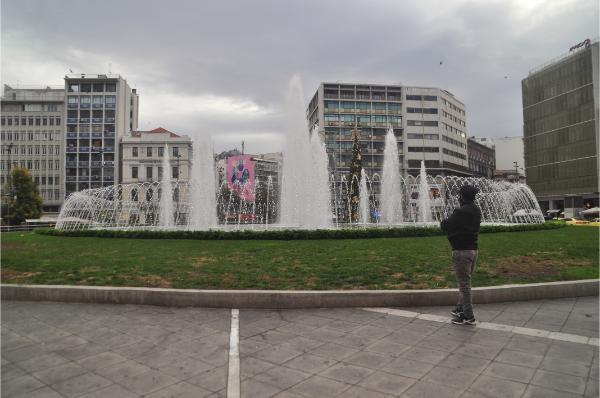
The city’s zero point and the intersection of two subway lines and several avenues, Omonoia Square is the very center of Athens. The neighborhood surrounding the square is famous—or rather notorious—for one thing: crime. Although a far cry from its nadir of decay prior to the 2004 Olympics, junkies shooting in the streets and prostitutes crowding the pavements are still a commonplace spectacle throughout the area.
However, while it’s undeniably true that Omonoia is the most dangerous place in Athens, its bad reputation is often exaggerated; being the most dangerous area of a very safe city is far from being a no-go zone. Violent crime is extremely rare all over Athens, and Omonoia is not an exception. As long as you keep common-sense precautions against pickpockets, you shouldn’t worry about roaming around the area at any time of the day or night. That said, and taking into account its central location, it is a legit idea to take advantage of the great hotel deals that the neighborhood’s stigma entails and, in passing, discover the dodgy yet fascinating facet of Athens.
